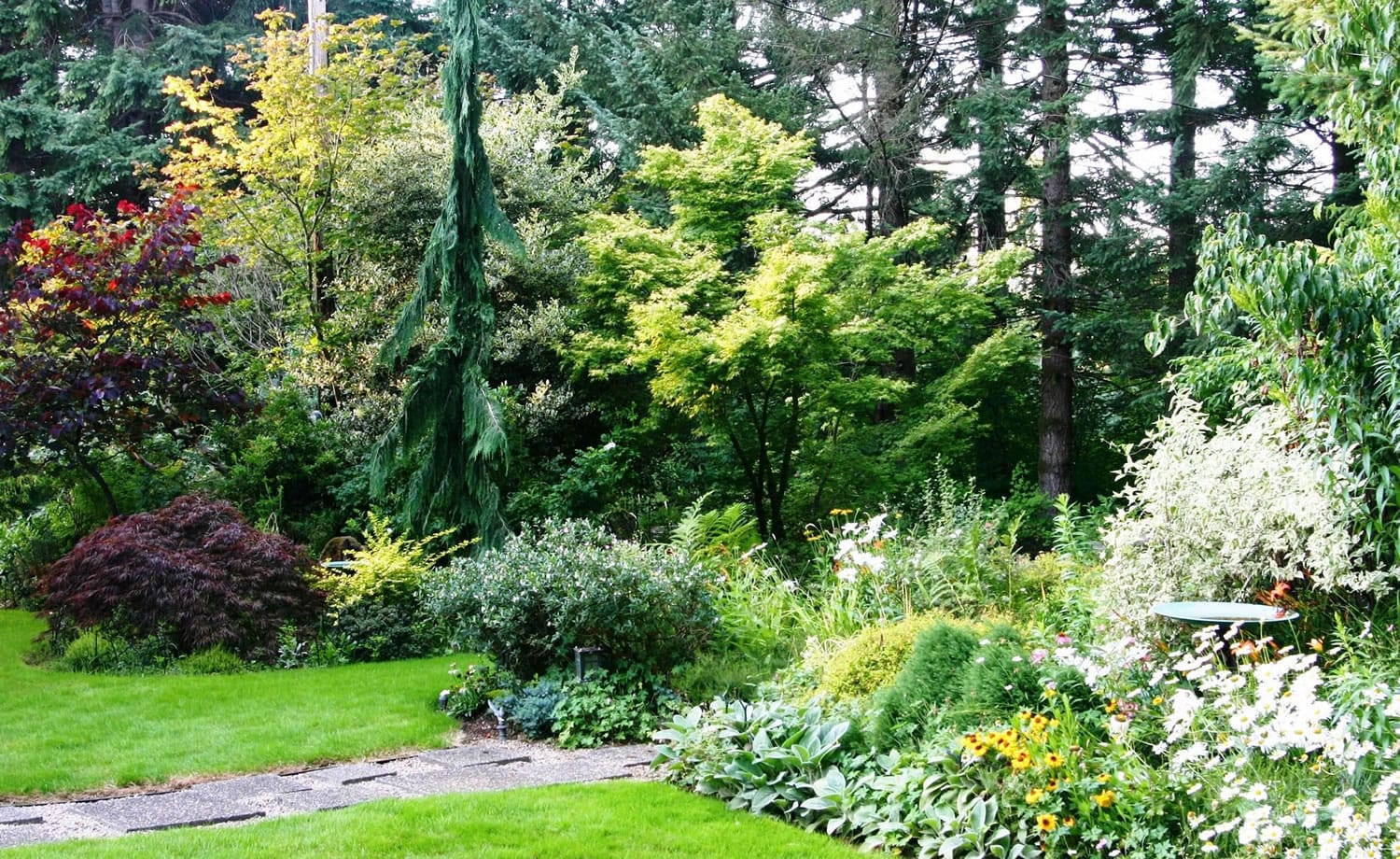The return of moderate autumn weather is a signal to begin planting again. Planting in the long, hot days of summer sun taxes the ability of newly planted trees and shrubs to survive. The stress of establishing root growth in the soil while trying to supply enough water to sustain leaf production is too much for most plants. By planting hardy perennials, trees and shrubs in the fall, you assure a period of perfect growth conditions for new plants.
When you plant in fall, weather conditions encourage the plant to expend its energy on root formation under the soil, rather than plant growth. The cooling temperature of the air suspends flower and leaf growth. The roots expand into the still-warm soil. Along with putting newly purchased plants into the ground, this is a good time to move plants from one area of the garden to another.
As summer wanes and autumn approaches, the sun begins to fall from a different angle. The earth below the surface continues to retain a good degree of warmth. This sets the plant up properly for a period of dormancy. As long as you are prepared to protect young plants from unexpected freezes, you can also put out needle and broadleaf evergreens in the fall. Take special care by watering them well for several days both before and after the move.
Most of us will find a distinct drop-off in the workload as fall comes upon us. Many plants require no attention at this time of year. The ornamental grasses are at their peak, displaying mature seed heads that sway in the slightest breeze. It’s too early to clean up beds and borders for winter and we’re still a way out from leaf fall. Although national garden magazines might urge you to plant out spring blooming bulbs, it’s a bit early in the Pacific Northwest. We can still expect a period of warm Indian summer before winter’s arrival.
Reinvigorate the garden
As long as you are out planting, this is the perfect time to create a new garden area. A satisfying bed, border or seating area with all-year interest will contain a mix of trees, shrubs, vines and perennials. Think of each season in the garden as you create this new area. Consider a selection of plants that will sustain an interest in multiple seasons. Three good choices are paperbark maple (Acer griseum); variegated, redtwig dogwood shrub (Cornus ‘Elegantissima’); and weeping Norway spruce (Picea abies ‘Pendula’).
Planting and transplanting are not difficult jobs, but it is true that many plants die because they are not planted properly. Make sure you have all your tools on hand and enough help to lift the plants you’re working with. Use a good, pointed shovel to dig. Have a set of pruners on hand in case you need to trim branches and use a tarp if the plant you are moving is extremely heavy and needs to be pulled across the yard.
Take some time to know what location will be best for your plant. First, determine whether the tree or shrub likes sun or shade, and be aware of its spacing and watering requirements. Dig the new hole before you dig up the tree or shrub. Once you dig up the plant, the longer its roots are out of the soil, the lower your chances for a successful transplanting.
The width of the planting hole should be two to three times that of the root ball. The depth should be kept the same as that of the root ball. The latest recommendation is to make it more shallow than deep, to avoid puddling and consequent root rot. When you reach the bottom of the hole, resist the temptation to break up the soil beneath. It could cause the tree or shrub to sink, inviting rot.
Gently slide the plant into the hole, and adjust it until it sits straight. Shovel the excavated soil back into the hole. Tamp this soil down firmly and water as you work, to eliminate air pockets. Mound up the soil in a ring around the plant, forming a berm that catches water like a basin.
Planting in the autumn season and planting well assures our main objective, keeping new transplants well watered until they become established. This in turn nurtures a sustained root growth, a key element of healthy transplants. One thing we can count on in the Pacific Northwest is the return of rain. When that happens, consider it a tangible benefit of doing the right job at the right time.
Robb Rosser is a WSU-certified master gardener. Reach him at Write2Robb@aol.com.



